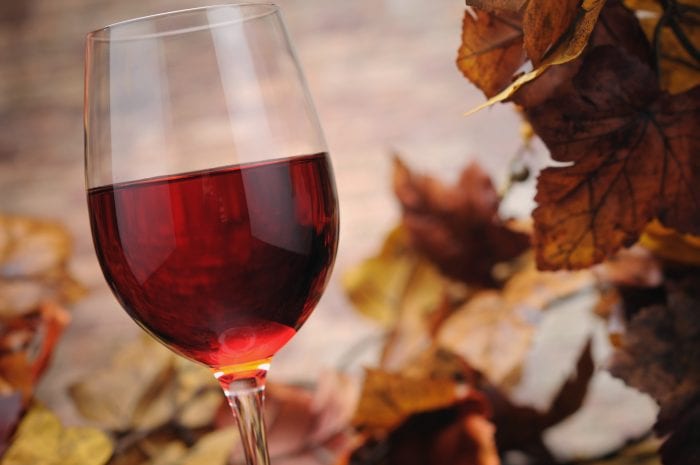By Bob Lipinski
Cabernet Franc (kah-behr-NAY frahn) is a thick-skinned, medium acid red grape variety grown in Bordeaux, France since at least 1784. Cabernet Franc is often blended with Cabernet Sauvignon and Merlot to make the dry wines of the Médoc, Graves, Pomerol, and Saint-Émilion. Cabernet Franc is also grown in other parts of France, especially the Loire Valley where it is blended to make the AOC wines of Bourgueil, Champigny, Chinon, Rosé d’Anjou, and Saumur. It is grown in many other countries and used for blending or to produce a varietally-labeled wine. The quality of its wine excels in parts of Tuscany, Italy, Ontario, Canada, New York State, Virginia, and Washington State.
Although not confirmed it is believed that Cabernet Franc originated in the Western Pyrénées in Southwest France and parts of Northern Spain. Cabernet Franc has been genetically linked to both Hondarribi Beltza and Morenoa grapes from the Basque Country, but parentage is not yet certain. In 1997, DNA analysis revealed that Cabernet Franc and Sauvignon Blanc are the parents of Cabernet Sauvignon. Although Cabernet Franc has over 30 synonyms, the most known are Bouchet and Breton, which are used in France.

Cabernet Franc Grapes
Wines made from Cabernet Franc grapes are lighter, softer, and more aromatic than Cabernet Sauvignon. Depending on where it is grown, some characteristic smells and tastes of Cabernet Franc wine include bell pepper, berries (blueberry, cranberry, mulberry, strawberry) black currants, black pepper, cherry, green olive, jam, and plum. Hints of basil, cinnamon, eucalyptus, herbs, licorice, mushroom, rosemary, tobacco, and spices are also present.
Cabernet Franc wine pairs with beef: pepper steak, roast beef, and most hearty stews. Try pasta in a marinara sauce; barbecued pork loin with mushrooms; grilled tuna or other firm-fleshed fish. Also, soy and ginger-flavored Asian cuisine, especially duck or just a bowl of wild mushroom risotto.
If you like cheese, Cabernet Franc matches well with Appenzeller, Blue Cheeses, Brie, Butterkäse, Cabécou, Cantal, Chaource, Cheddar, Colby, Gruyère, Jarlsberg, Leyden, Maroilles, Sainte-Maure, and Saint-Nectaire.
Although most people who like Cabernet Franc drink the light to medium to full-bodied wines, there are other styles made. For example, white, dry rosé, and sparkling Cabernet Franc wines are made globally. Two excellent sweet dessert wines are Floc de Gascogne from the Armagnac region and Pineau des Charentes from the Cognac region of France. However, the grand prize is a bottle of Cabernet Franc Icewine, a specialty of Canada and New York State. It usually has a brilliant orange-ruby color and is ultra-sweet.
What are you drinking tonight?
Bob Lipinski is the author of 10 books, including “101: Everything You Need To Know About Whiskey” and “Italian Wine & Cheese Made Simple” (available on Amazon.com). He conducts training seminars on Wine, Spirits, and Food and is available for speaking engagements. He can be reached at www.boblipinski.com OR bkjm@hotmail.com


 Bob Lipinski, author of 10 books; writes, consults, and conducts training seminars on Wine, Spirits, and Food and is available for speaking engagements.
Bob Lipinski, author of 10 books; writes, consults, and conducts training seminars on Wine, Spirits, and Food and is available for speaking engagements.
Recent Comments